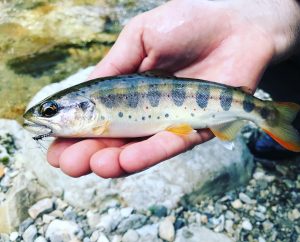 The first of March marked the beginning of amago fishing season in many of the mountain streams of Japan. Amago, or “red-spotted masu trout” are a specialty of mountain streams. Though they stand out with their distinctive red spots and pretty blue and silver colors, they are a very defensive fish, and love to hide in deep areas crowded with rocks. Fisherman have to climb pretty far up the tributaries, to the hard to reach places just to be in the right area. Once they are there, they have to be careful not to be seen or heard by these clever fish, as they will swim away at first sight.
The first of March marked the beginning of amago fishing season in many of the mountain streams of Japan. Amago, or “red-spotted masu trout” are a specialty of mountain streams. Though they stand out with their distinctive red spots and pretty blue and silver colors, they are a very defensive fish, and love to hide in deep areas crowded with rocks. Fisherman have to climb pretty far up the tributaries, to the hard to reach places just to be in the right area. Once they are there, they have to be careful not to be seen or heard by these clever fish, as they will swim away at first sight.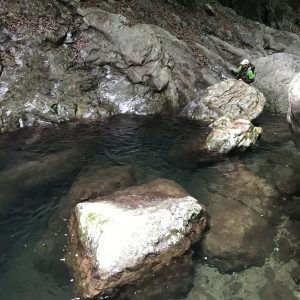 In Japanese, amago are nicknamed the “queens of the freshwater streams”, but that doesn’t stop people from enjoying their delicious taste. Salting and barbecuing them on skewers is the most common way of eating them, but the locals have many other delicious ways of bringing the unique flavor of amago. Their name comes from the word “ame-go”, which some older people still call them. “Ame” means rain, and the “ame-go” name came from how there were always so many of these fish during the rainy months of May and June.
In Japanese, amago are nicknamed the “queens of the freshwater streams”, but that doesn’t stop people from enjoying their delicious taste. Salting and barbecuing them on skewers is the most common way of eating them, but the locals have many other delicious ways of bringing the unique flavor of amago. Their name comes from the word “ame-go”, which some older people still call them. “Ame” means rain, and the “ame-go” name came from how there were always so many of these fish during the rainy months of May and June.
Fishing is a fantastic way to enjoy the nature of Japan. There are many mountains in eastern and southern Nara Prefecture where you can find these fish. However, instead of looking on your own, I recommend finding a local fisherman who is willing to take you, as they surely know both the good fishing spots and the best way to cook up what you catch. 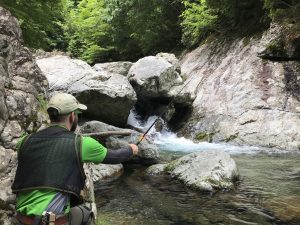
Daily Archives: 2020-03-19
Soy Sauce with Your Five Senses

Soy sauce is one of the fundamental ingredients in Japanese cuisine. It is so common in Japan that it is easily over-looked. It often plays a supporting role, like with sashimi or boiled vegetables. However, a high-quality soy sauce, or just the right one, can make all of the difference in how a dish tastes. In my area, locals are very particular about which soy sauce they use in their kitchen, and are often unwilling to change styles or brands.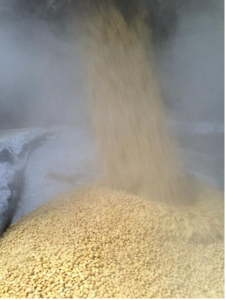
Have you ever wondered how soy sauce is made? As you might expect, it starts with soy beans, and includes flour, sugar, and a yeast called “koji-kin”. Though it is a long and complicated process, there are videos online that show you how to make it at home. Many of us will be spending more time at home for a little longer, so maybe learning from these videos and trying your hand at making soy sauce might be a lot of fun? If you ever come to Nara, we also have some experiences where you can visit soy sauce brewers, and see first-hand how they make this essential part of Japanese cuisine. You can meet the brewers themselves, and learn anything and everything you wanted to know about soy sauce. After the scents and sounds of brewing, you will finish the program by tasting some of the soy sauce, and can experience this fundamental ingredient with all five senses.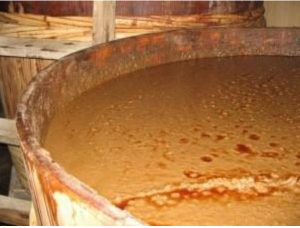
Knowing how something is made and where it comes from helps us appreciate things a lot more. In this case of soy sauce, it is seemingly everywhere, so just knowing a little more about this strong, black ingredient is likely to make your day a little more interesting.
